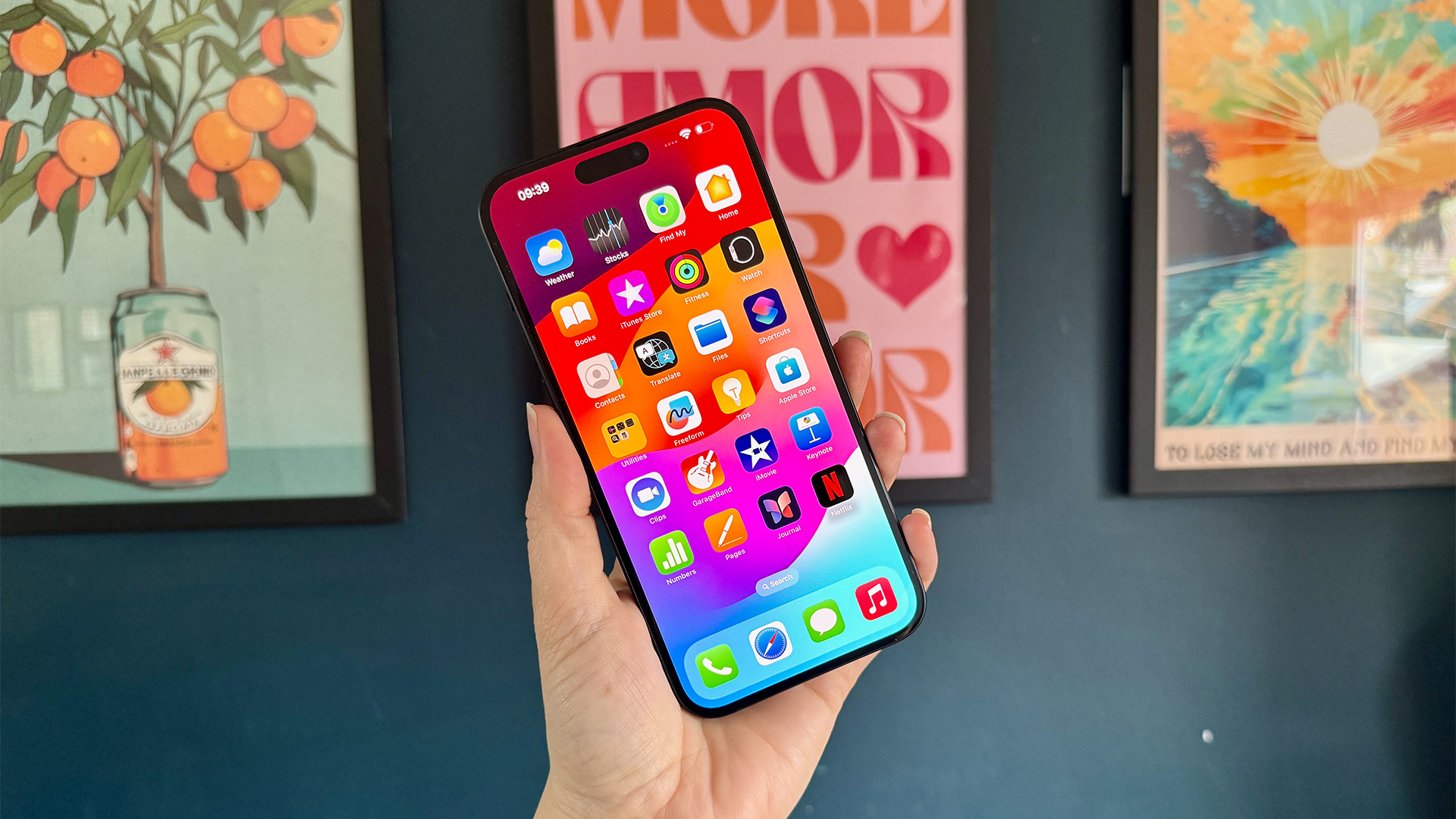What Hi-Fi? Verdict
The iPhone 15 Plus is a big-screened phone with a lot to love, for those who don’t need the bells and whistles of the Pro family
Pros
- +
Bright and detailed display
- +
Strong musical performance
- +
Fantastic battery life
Cons
- -
60Hz display
- -
Slow charging
Why you can trust What Hi-Fi?
Last year’s iPhone 14 Plus should have been a hit among big-screen phone fans, but it ended up feeling like something of an also-ran.
A new proposition from Apple as of last year, the Plus brought the big-screen appeal to Apple’s entry-level line for the first time – the larger 6.7-inch screen having previously been the sole territory of the Pro Max.
However, there were just not enough features to tempt people away from the Pro Max, particularly when the savings between the two weren’t that great either.
This year, the Plus inherits several of the Pro’s features, narrowing the gap between the two, and there has been a price freeze (or drop, for the UK market) that feels unheard of in consumer tech right now.
It sets the Plus out as a true contender for those who want a talented larger-screened iPhone, without the additional outlay of the Pro. Assuming its performance is up to scratch, of course...
Price
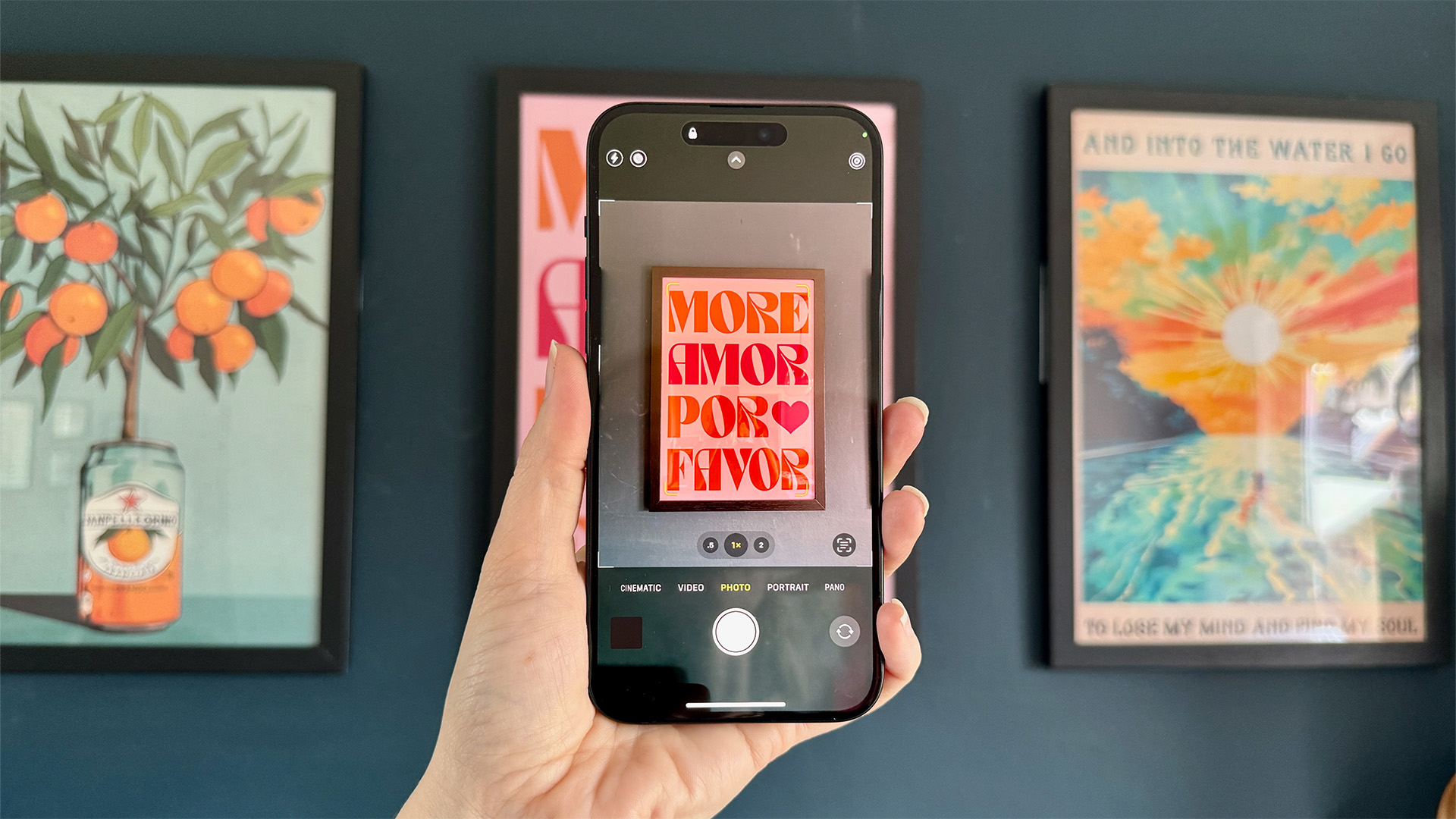
Depending on where you are in the world, the iPhone 15 Plus has managed to dodge the price rises that we are seeing across much of consumer tech, holding its price in the US, getting just a small price bump in Australia, and actually launching cheaper than last year for us lucky lot in the UK.
As usual, there’s a choice of three storage levels – 128GB, 256GB and 512GB – with prices starting at £899 / $899 / AU$1649 and going up incrementally from there.
If you’re wondering how much money you might save by plumping for the Plus instead of the Pro, it’s not inconsiderable – the iPhone 15 Pro Max starts at £1199 / $1199 / AU$2199, although that is for the Pro’s starting storage of 256GB instead of 128GB.
As for how it compares to the Samsung S24 Plus, the 256GB versions of each cost around the same, only Australian buyers or those looking for more storage will save by opting for Android.
| Storage | iPhone 15 Plus | iPhone 15 Pro Max | Samsung Galaxy S24 Plus |
|---|---|---|---|
| 128GB | £899 / $899 / AU$1649 | N/a | N/a |
| 256GB | £999 / $999 / AU$1849 | £1199 / $1199 / AU$2199 | £999 / $1000 / AU$1699 |
| 512GB | £1199 / $1199 / AU$2199 | £1399 / $1399 / AU$2549 | £1099 / $1120 / AU$1899 |
| 1TB | N/a | £1599 / $1599 / AU$2899 | N/a |
Design
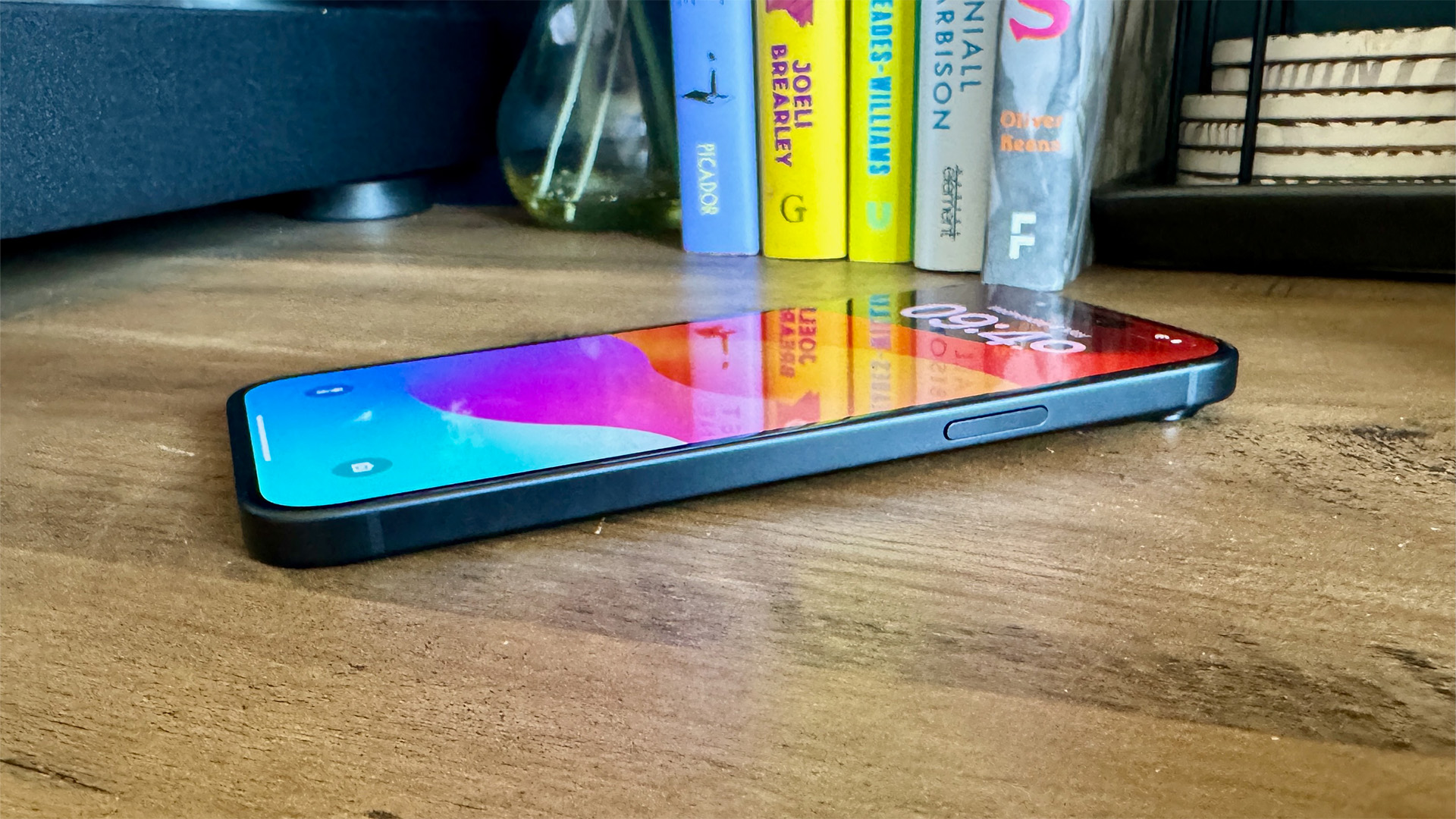
The design of the iPhone 15 Plus is, at first glance, rather a lot like that of the iPhone 14 Plus, but there are some key differences that refine its design from last year.
There’s still the sturdy aluminium frame around the outside edge, with a smooth, matte (or satin, depending on your choice of finish) colour-infused glass on the back. However, this year the edges have been rounded off and softened, making it much more comfortable to hold than the 14 Plus was. It’s a few grams lighter too, which makes it pretty lightweight for such a large phone – noticeably so when compared with this year’s stablemate, the 15 Pro Max, at 201g vs 221g.
There’s a choice of five finishes – black, blue, green, yellow and pink – with all the colours taking on a pastel hue rather than some of the bolder options of last year. Our black review sample is certainly the most understated of the lot, but we do have a soft spot for some of the more colourful options (and wish there was something punchier to choose from too).
That said, the likelihood is that you’ll be putting it straight into a case the moment you get it. The 6.7-inch screen is covered by Apple’s Ceramic Shield glass, which is much hardier than that of older iPhones. It’s still not immune to surface scratches though, nor clumsy drops from height, so as ever, a case and screen protector are recommended.
Whether you have other smartphones in your household, or even an iPad or MacBook, both of which use USB-C – one single cable can now charge them all, which is seriously helpful when travelling.
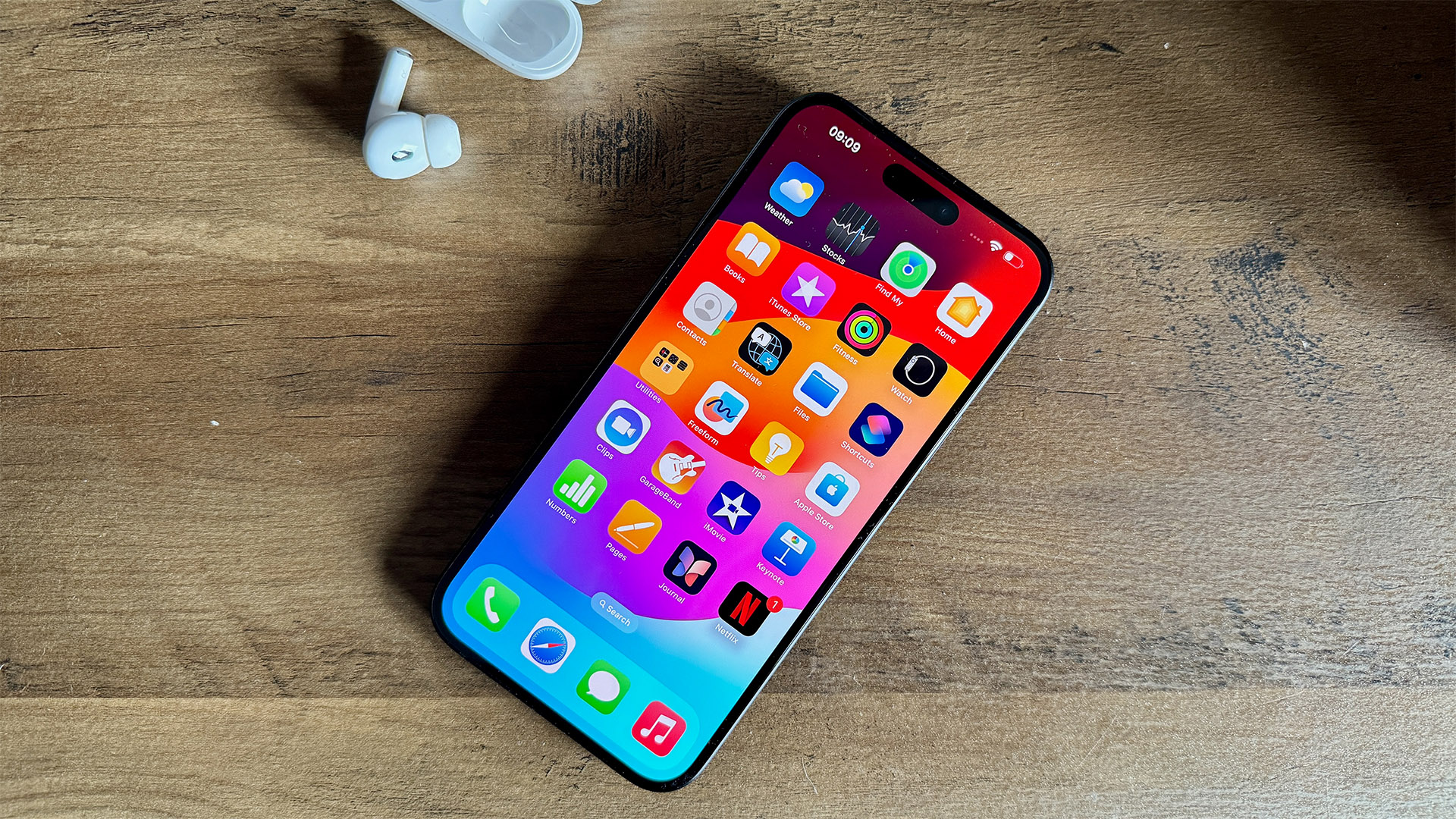
Screen size 6.7 inches
Type OLED
Resolution 2796 x 1290 (460 ppi)
Operating system iOS 17
Finishes x 5
Battery life Up to 26 hours (video), up to 100 hours (audio)
Dimensions (hwd) 161 x 78 x 7.8mm
Weight 201g
Capacity 128GB, 256GB, 512GB
Around the back, the camera is a two-lens effort as it was last year, with each lens sitting diagonally across from the other. We’ll talk about their performance in a bit more detail shortly, but there is a single camera bump to accommodate them, and the lenses sit a little proud of that.
Back to the front, and the iPhone 15 Plus does away with the long-standing camera notch and instead hides the selfie camera within Apple’s Dynamic Island feature, which launched on last year’s 14 Pro. This gives you at-a-glance information for certain apps, as well as easy access to features and controls, depending on the app you’re using. It doesn’t revolutionise the way you use the phone, but we do find some of this ready information occasionally useful, such as when using a timer, or for controlling music playback.
Along the side, the iPhone 15 Plus keeps the old-school silencer switch this year, so there’s no new Action button as there is on the 15 Pro. There is, however, a USB-C port in place of the Lightning connector, a move we know was pushed on Apple by the EU, but one that should make your cable life a lot easier.
Features
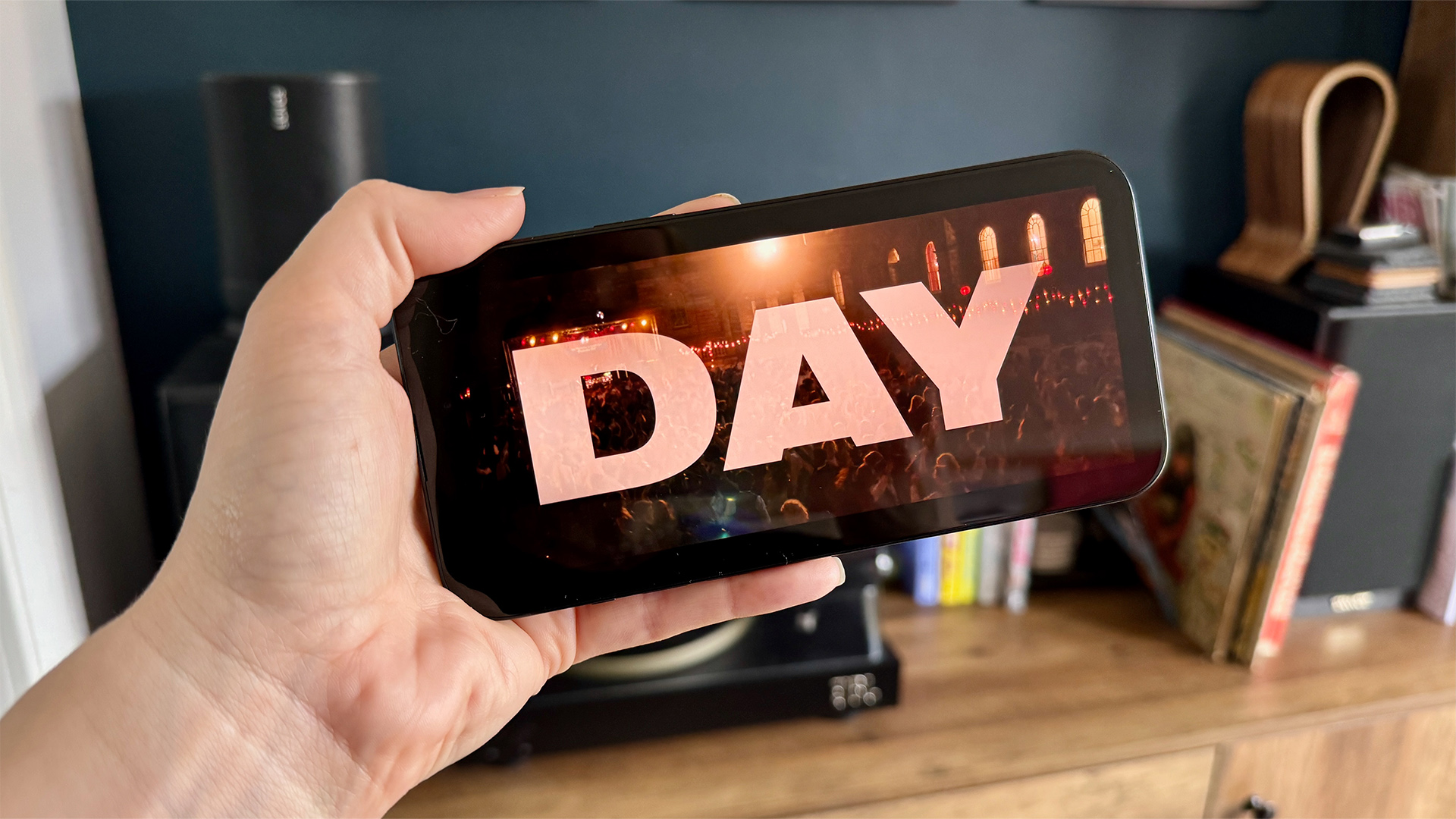
While the Pro family tends to boast the majority of Apple’s yearly headline upgrades, the iPhone 15 Plus packs in several new features compared with last year’s 14 Plus that bring it closer to the Pro family than before.
Firstly, it comes with last year’s Pro chip, the A16 Bionic, which has a six-core CPU, five-core GPU and 16-core Neural Engine. Okay, so this year’s Pro range gets upgraded to the even-more-powerful A17 Pro chip, but the A16 Bionic will not leave you wanting – we’ve found the 15 Plus more than capable of handling anything we throw at it.
However, something that may be a deal breaker – particularly for gamers – is that this screen's refresh rate maxes out at 60Hz – not 90Hz or 120Hz like a lot of the competition. This means that when moving around the operating system or when playing certain games, you might notice that the 15 Plus isn’t quite as silky smooth and responsive as other phones at this level, which is disappointing.
Speaking of the operating system, the iPhone 15 Plus uses Apple’s iOS 17, which looks great, and is as intuitive and easy to use as ever. It also includes several new features that upgrade the user experience compared with last year, including interactive widgets, the recent ability to side-load apps (for users in Europe, at least), and Standby mode for at-a-glance information when charging. There’s no Always On screen here though – that’s another Pro-only feature that we do miss, but the good news is the impact this has on battery life.
The 15 Plus delivers the best battery life of any iPhone we can remember – and better than that of most of its competitors, too. Apple reckons you’ll get 20 hours of streaming video online (up to 26 hours if stored on your device), and in practice, this translates to a true two-day battery life with average use. It easily got through one day with pretty heavy usage, and considering most people will charge it at night anyway, the days of carrying your Apple phone charger with you for a middle-of-the-day battery boost are all but gone here.
When you do need to recharge, the iPhone offers wired charging via USB-C or a choice of MagSafe (20W) or Qi (7.5W) wireless charging. When charging via cable you can get around 50 per cent of the charge back in 30 minutes, with a full charge taking a rather slow two hours.
Camera

The iPhone 15 Plus’ main camera gets a boost this year, up to 48MP from 12MP, with the ultra-wide lens staying at 12MP, and the selfie camera too.
Pixel binning is used for the first time at this level of iPhone, which basically sees the camera’s sensor combining the information from a number of pixels together for a better result.
That means you can expect improvements across the board using this lens, with brighter, punchier and more detailed pictures from the main camera, improved low-light snaps and better 2x zoom shots too.
That’s because, although there’s no dedicated zoom lens on the Plus, the 2x zoom image is taken from the centre of the main sensor, so with more megapixels to play with, the zoom quality is much cleaner and clearer.
The ultra-wide lens remains unchanged from last year, and it’ll do for when you need a wider POV, but detail is generally softer and the overall picture lacks the same level of dynamism as the main lens. It’s not much cop in low light either.
Perhaps one of the most useful updates this year is the fact that the Portrait effect can now be applied after the fact, so you no longer have to pre-select the Portrait mode to get your artsy blurred background.
Video is available up to 4K at 60Hz with support for Dolby Vision HDR and 2x zoom while filming, and thanks to the built-in optical image stabilisation, is smooth and detailed. Cinematic Mode, which launched with the iPhone 13, also returns here and delivers the Portrait-esque blurry effect for your videos, but it can only shoot up to 4K at 30Hz.
Picture
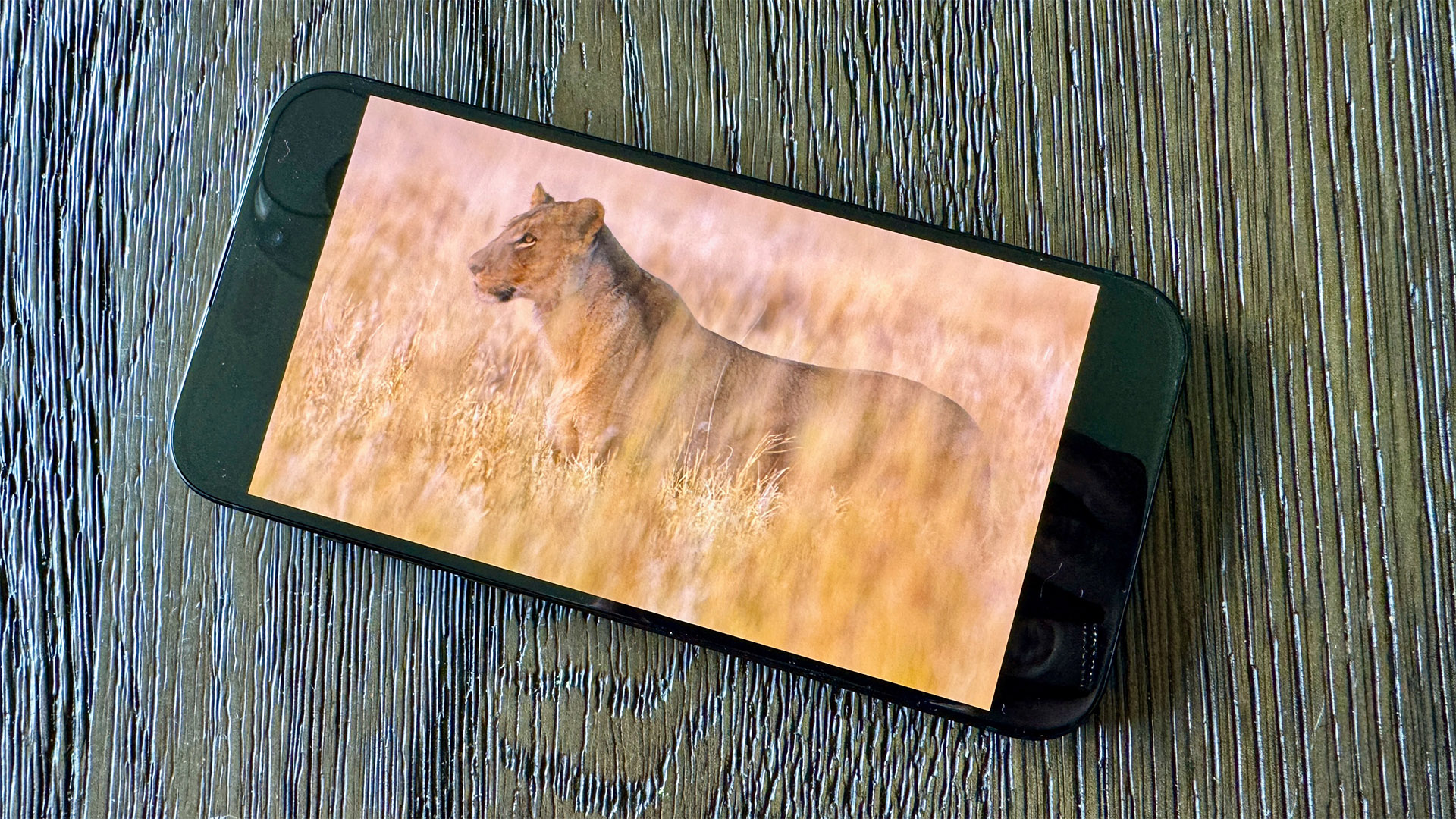
The 6.7-inch Super Retina XDR OLED screen here has had a bit of an upgrade on last year, now offering 2000 nits peak brightness, up from 1200, and matching the 15 Pro capabilities.
This makes the Plus even better for watching movies in brighter surroundings and gives some added pop to HDR highlights, which is really noticeable in use.
Firing up Baby Reindeer in Dolby Vision on Netflix, while the overall character when compared with last year’s iPhone 14 is very similar indeed, against the dingy backdrop of The Heart Pub the wall lights are more punchy; the sunlight behind netted curtains in the cafe Donny and Martha go to all the more pronounced.
Blacks still look as rich and deep as ever, and the extra brightness only helps to emphasise the 15 Plus’ performance at the other end of the scale. Colours are beautifully and faithfully rendered too, skin tones look natural and realistic, and brighter colours have just enough vibrancy without verging on fake.
The picture is sharp, detail levels are good and motion looks good – that 60Hz refresh rate has no adverse effect on the viewing experience.
A quick comparison with the iPhone 15 Pro does show what you get from the pricier display, though. Once again, the characters are very similar, but there’s just a touch more subtlety in the Pro's picture. Fine details are just a little more clearly highlighted, which helps to give the impression of more depth and realism to the image. However, in isolation, you really won’t find yourself wanting with the iPhone 15 Plus.
Sound
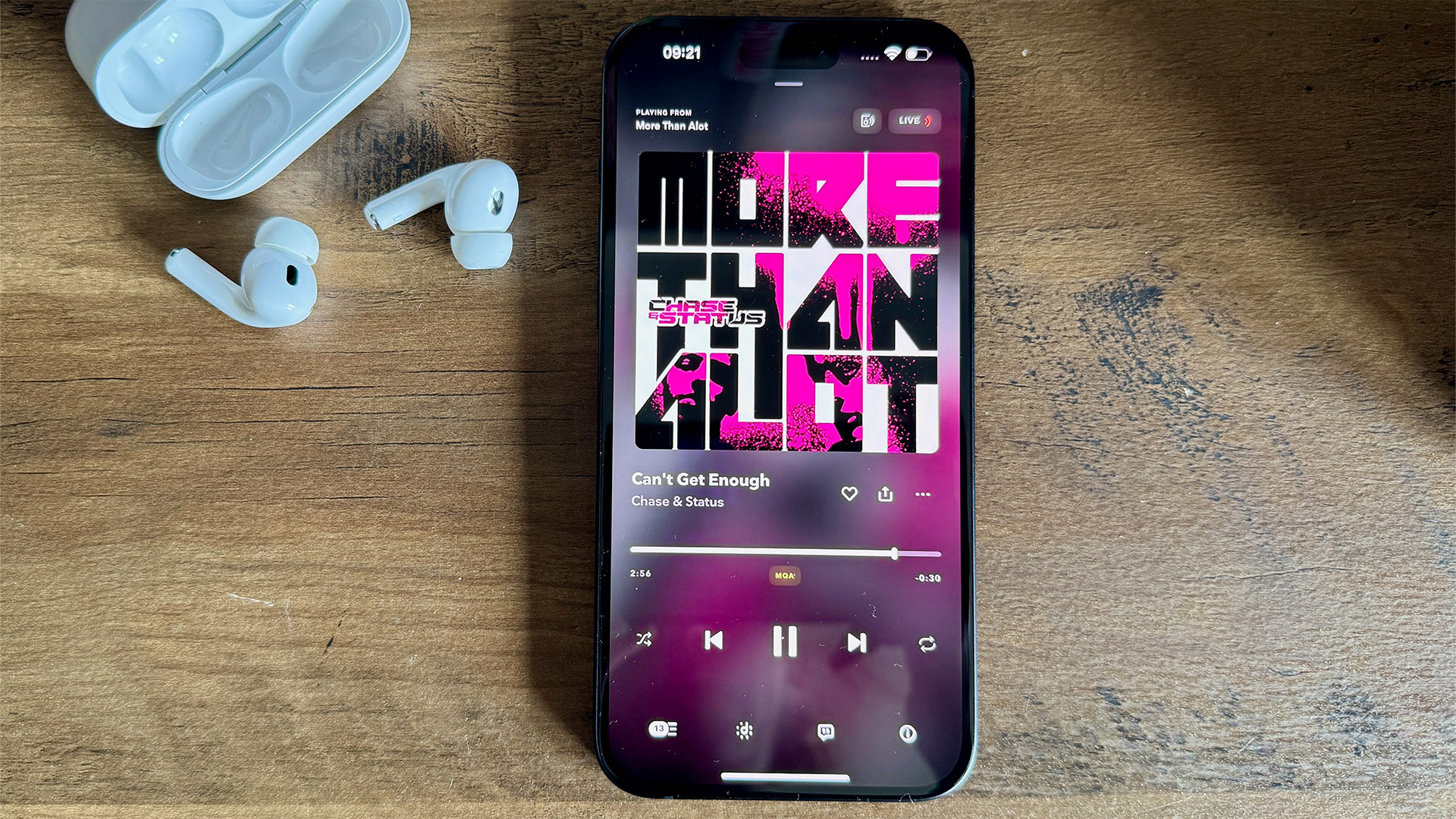
As we so often find with iPhones, the 15 Plus makes some subtle improvements on last generation’s musical efforts, and though there’s been no word from Apple regarding what’s been done to cause this, the improvements are there.
When streaming Scar Tissue by Ghostface Killah from Tidal, the iPhone 15 Plus has that well-known Apple character – full-bodied, forward and exciting, with a good amount of insight, great timing and a strong handle on dynamics.
However, with a play-through of Bitter Sweet Symphony by The Verve we note that the upper midrange all the way through to the treble sounds a little cleaner, and therefore more detailed. It isn’t a night-and-day difference but the improvements are there, and it makes the iPhone 14’s treble performance sound a little unrefined by comparison.
We listen both wired (using USB-C headphones – another great benefit of the move to USB-C) and wirelessly, and Apple has managed to maintain the character between them very well indeed. You will squeeze out a little more subtlety, solidity and fluidity when listening wired, though, with Alanis Morrisette’s You Oughta Know sounding all the more cutting and raw, without ever sounding hard or harsh.
If you get caught without headphones, you’ll get a decent performance through the built-in speakers. It’s a clean, crisp and solid sound that manages to pick out vocals in movie soundtracks with enough focus, and give enough space to music so it doesn’t sound overly congested.
You’re still always much better off using headphones where you can for the best performance – including the ability to unlock Apple’s spatial audio with head tracking, if your headphones are compatible.
Verdict
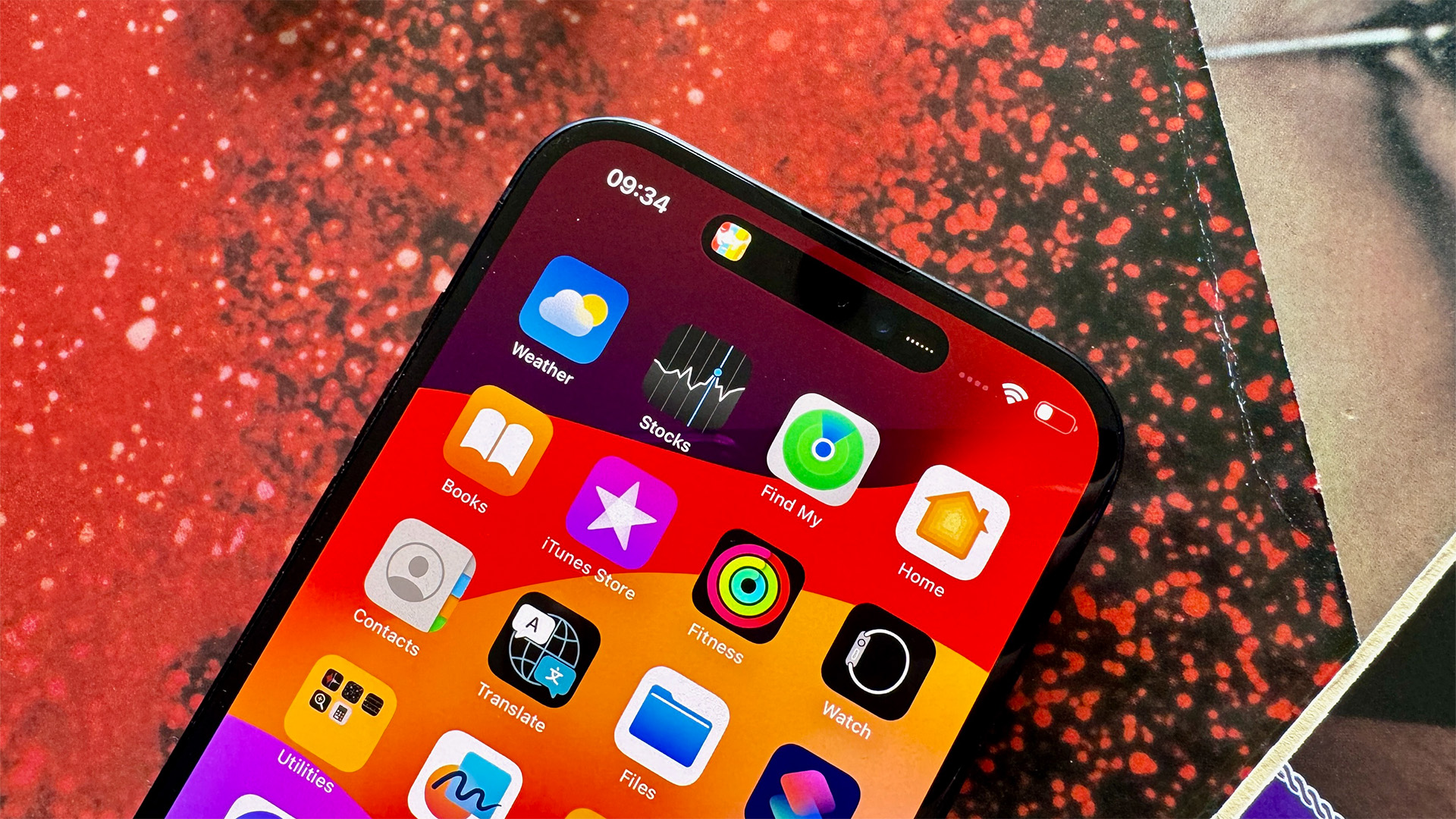
If you’re looking for a large-screen iPhone but don’t have the money to splurge on the 15 Pro Max, the 15 Plus may well offer everything you need to enjoy your music and movies on the go.
The screen's 60Hz refresh rate is a bit of a downer, but the phone's overall performance holds up in spite of that, with sharp, punchy and detailed video, a cleaner, clearer musical performance than last year and the best battery life we’ve seen from an iPhone yet.
While it misses out on some of the more sophisticated features of its more premium sibling, the iPhone 15 Plus is a solid performer that most people will find serves them very well indeed.
SCORES
- Picture 5
- Sound 5
- Features 4
MORE:
Read our review of the iPhone 15 Pro Max
Also consider the Samsung Galaxy S24 Ultra
Read our iPhone 14 Pro Max review
What Hi-Fi?, founded in 1976, is the world's leading independent guide to buying and owning hi-fi and home entertainment products. Our comprehensive tests help you buy the very best for your money, with our advice sections giving you step-by-step information on how to get even more from your music and movies. Everything is tested by our dedicated team of in-house reviewers in our custom-built test rooms in London, Reading and Bath. Our coveted five-star rating and Awards are recognised all over the world as the ultimate seal of approval, so you can buy with absolute confidence.
